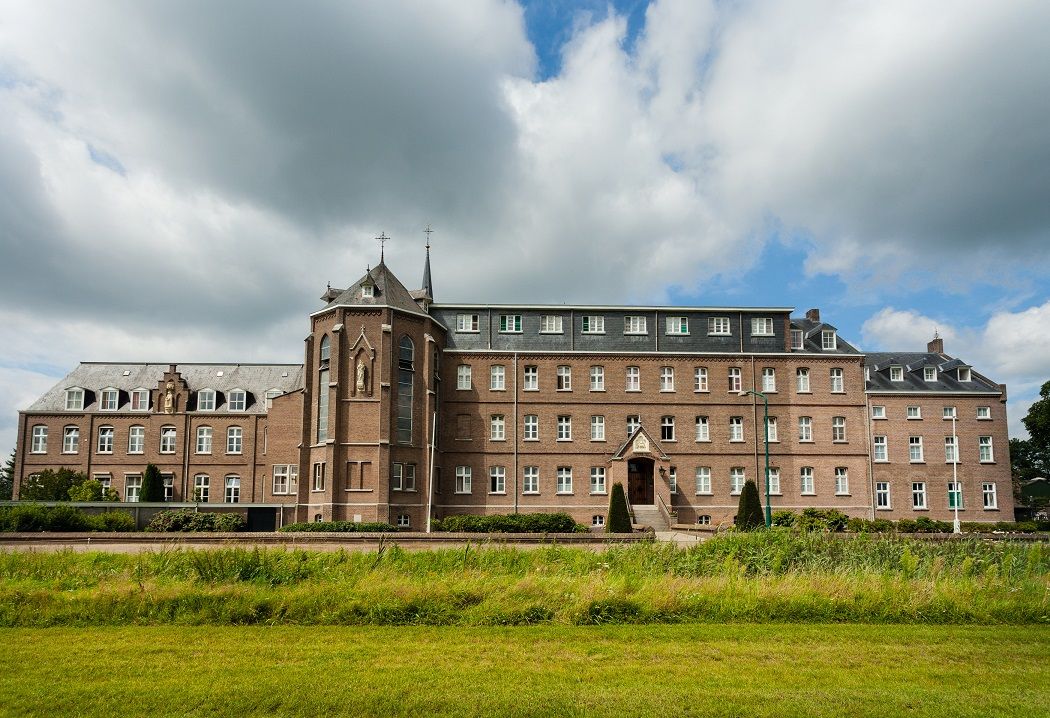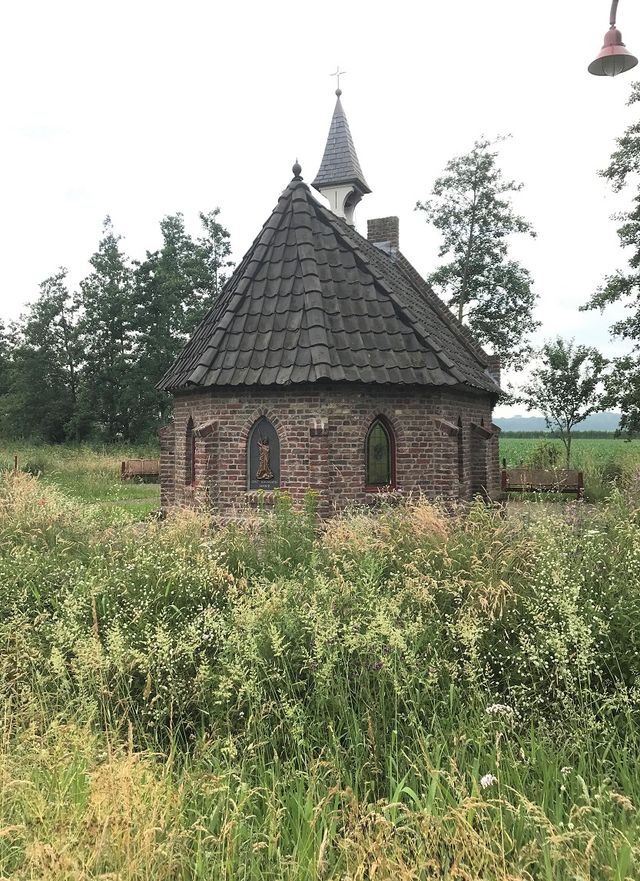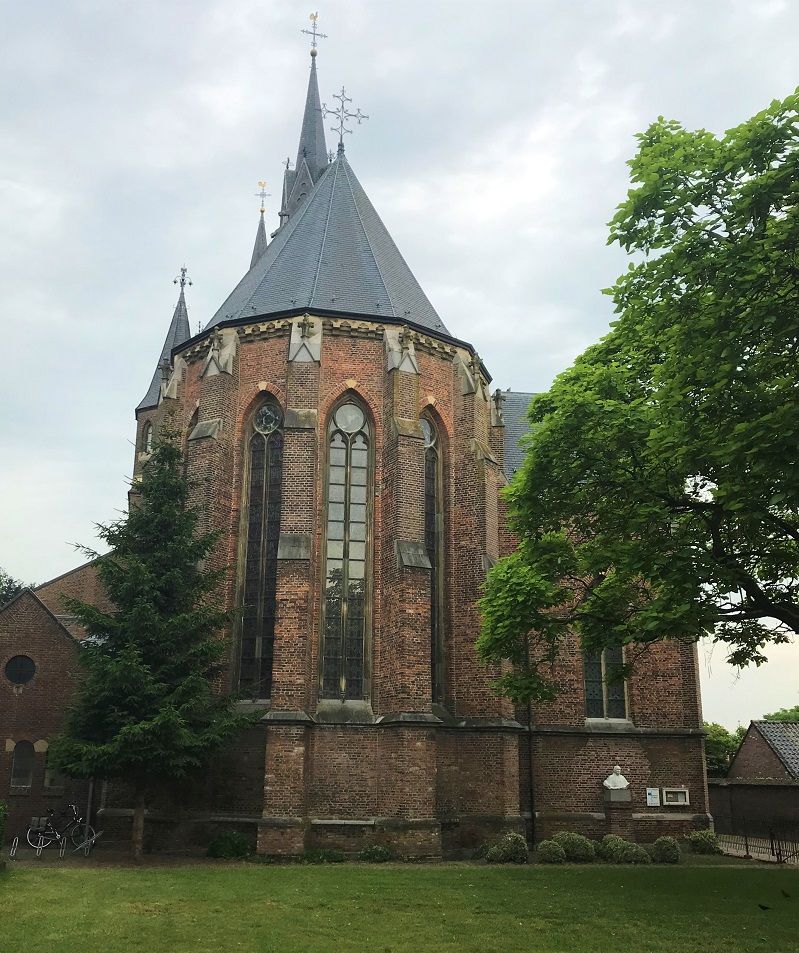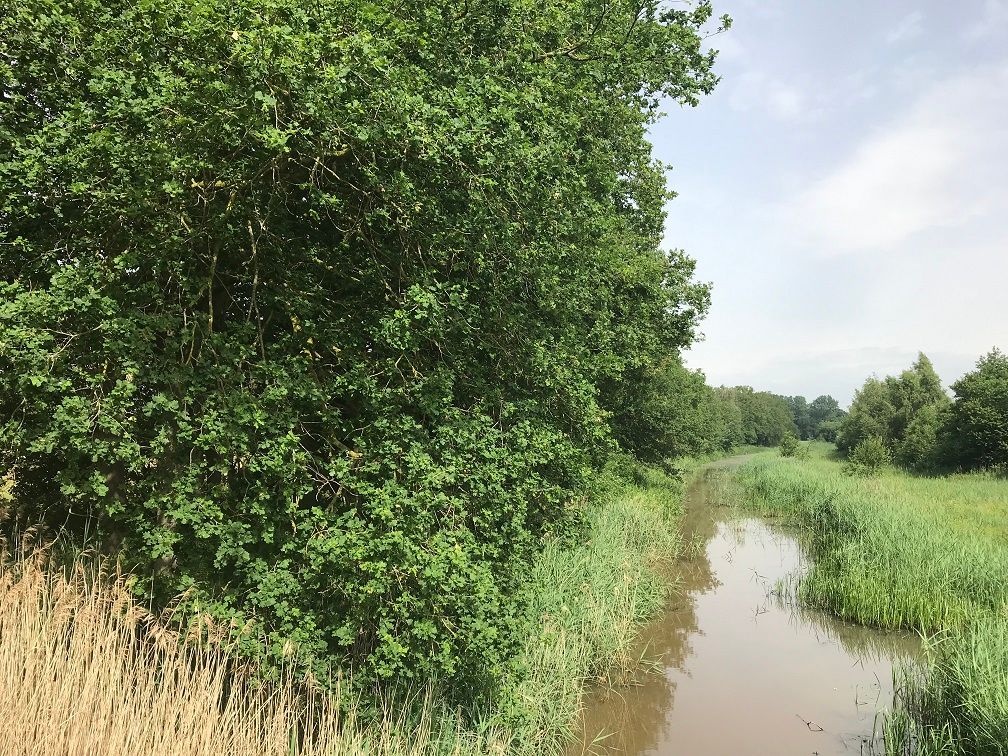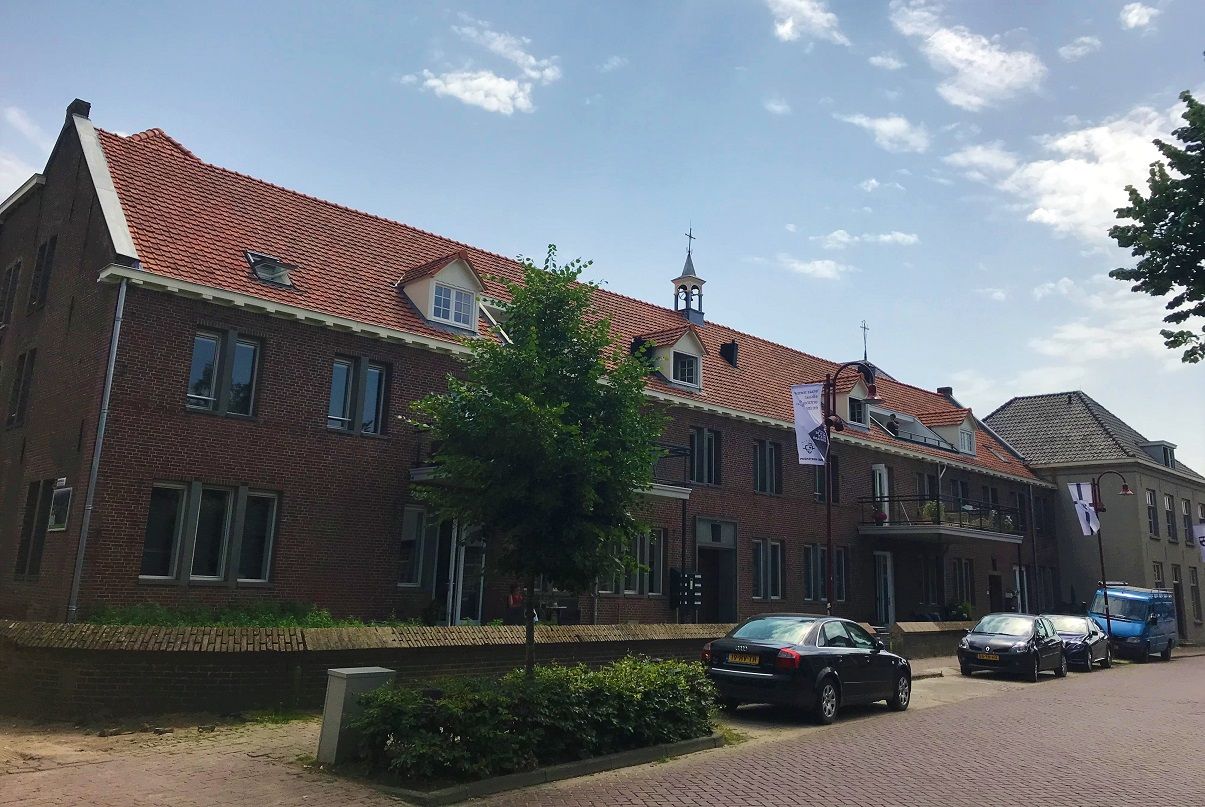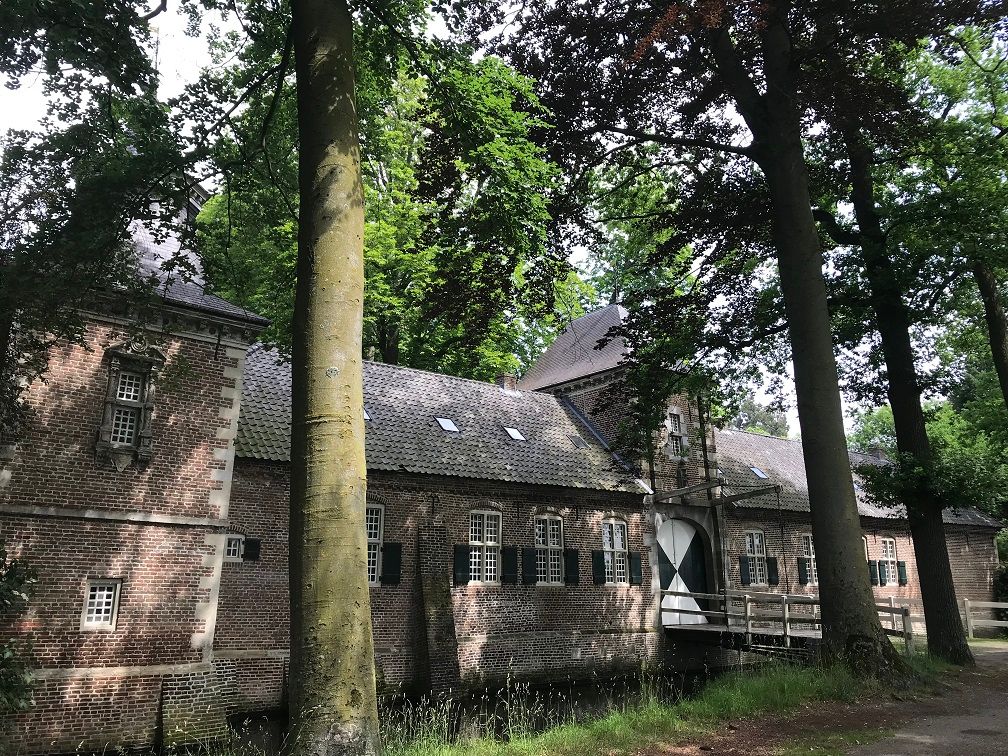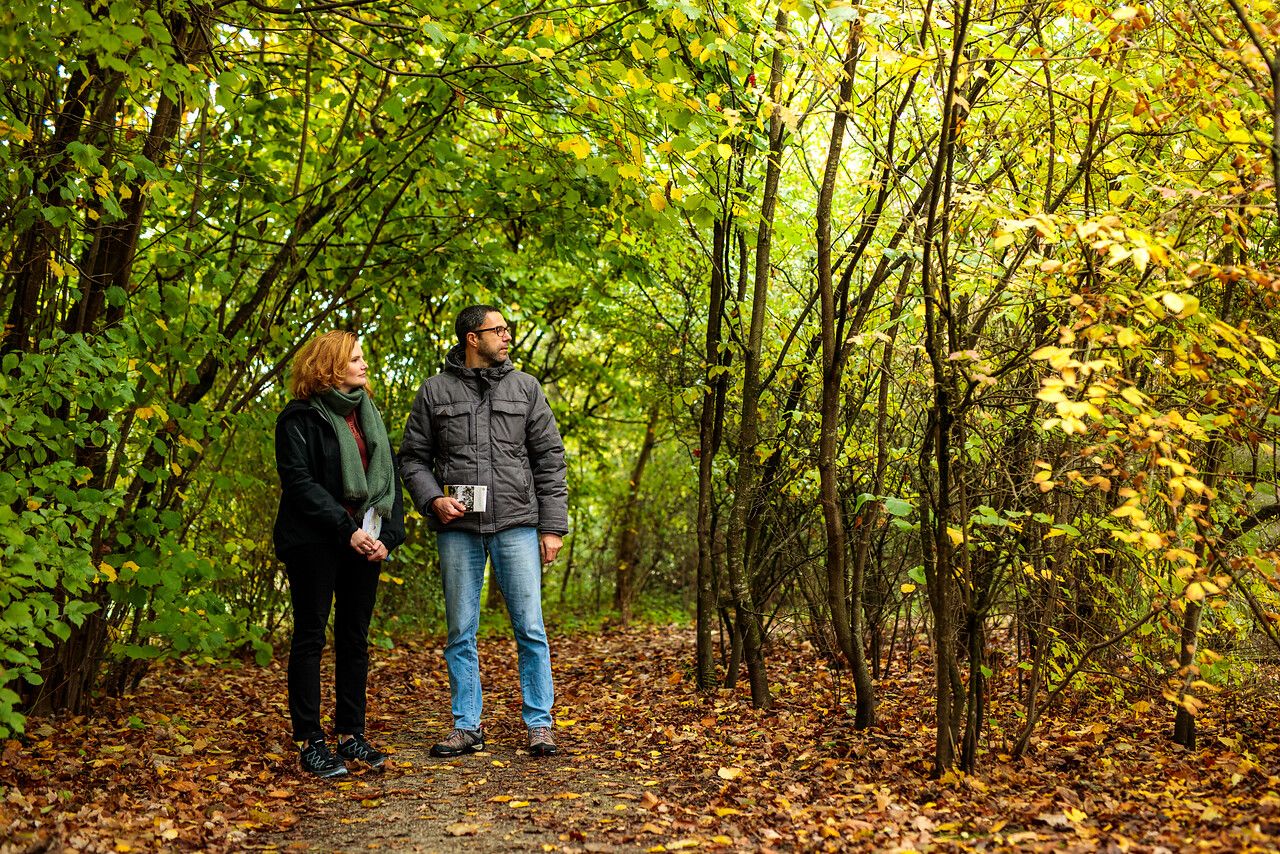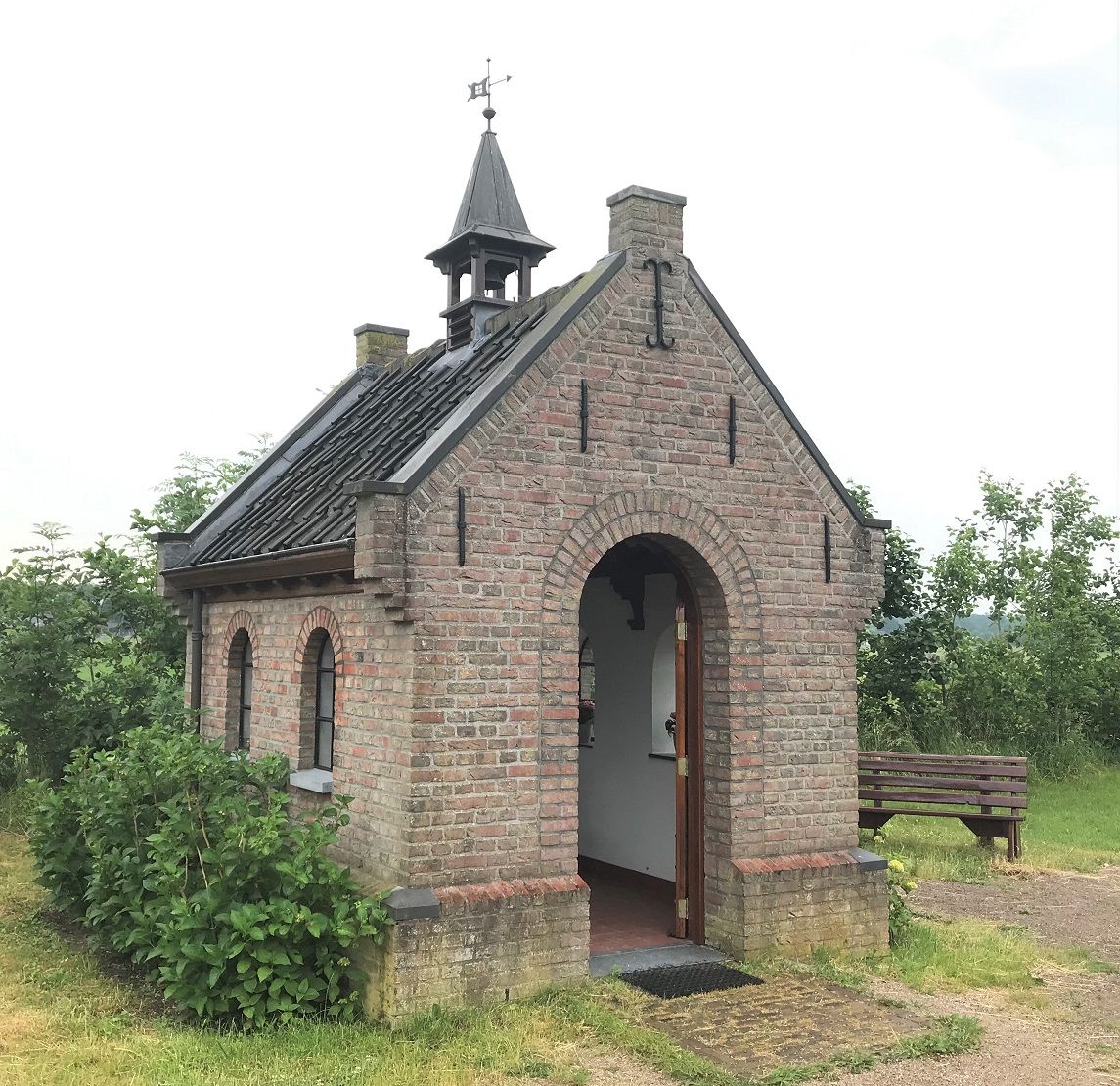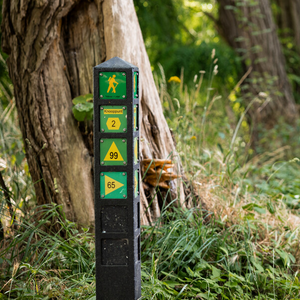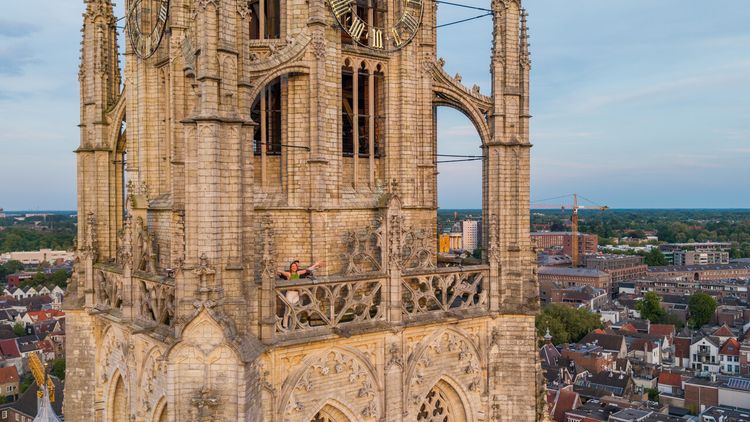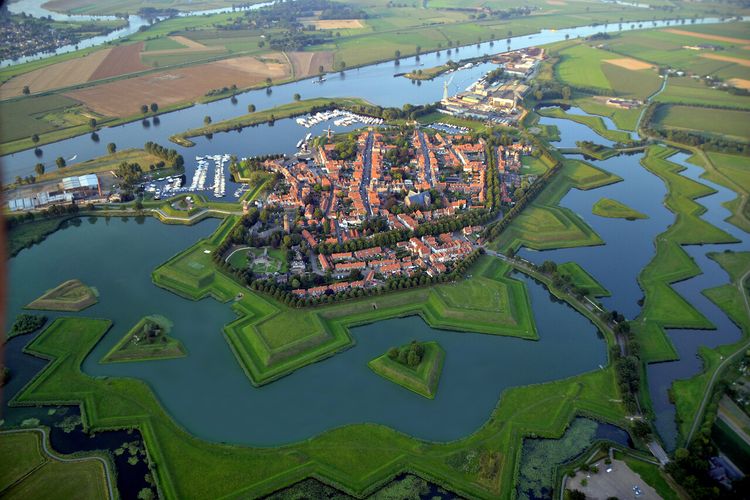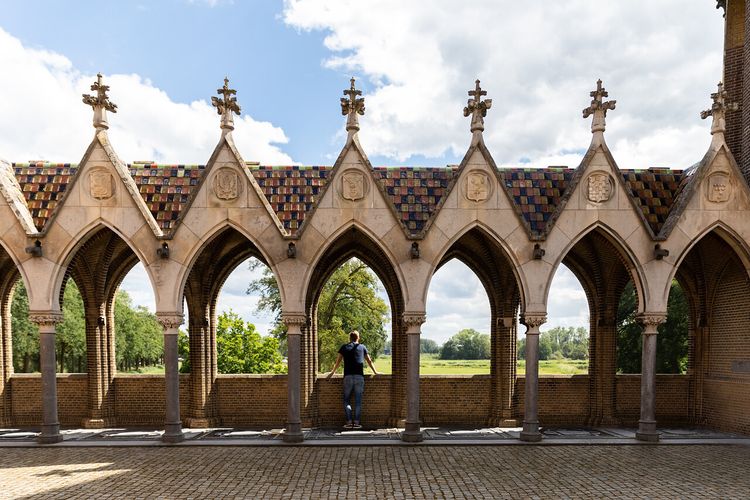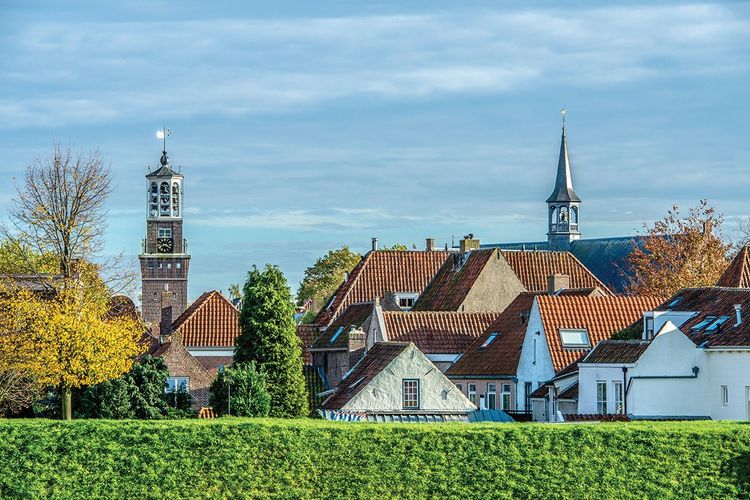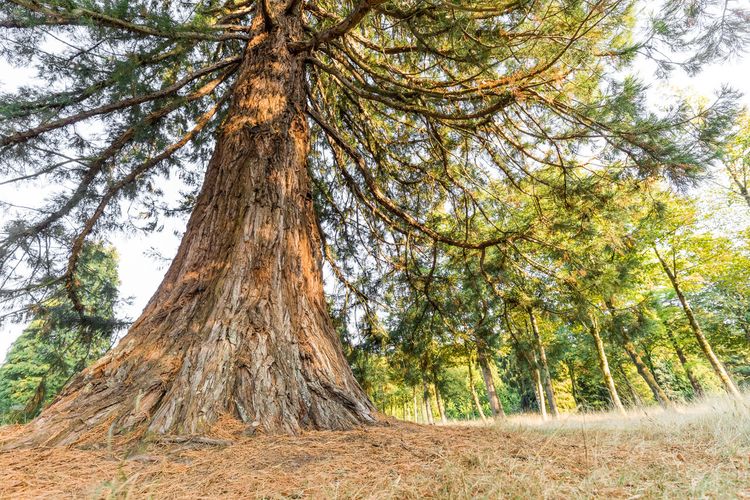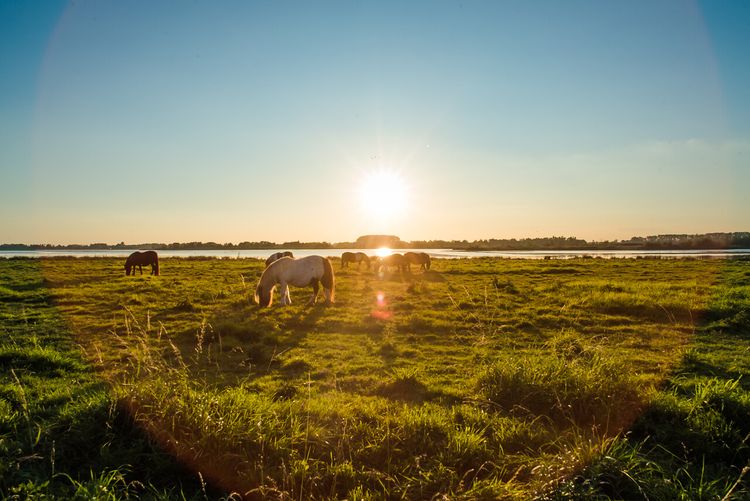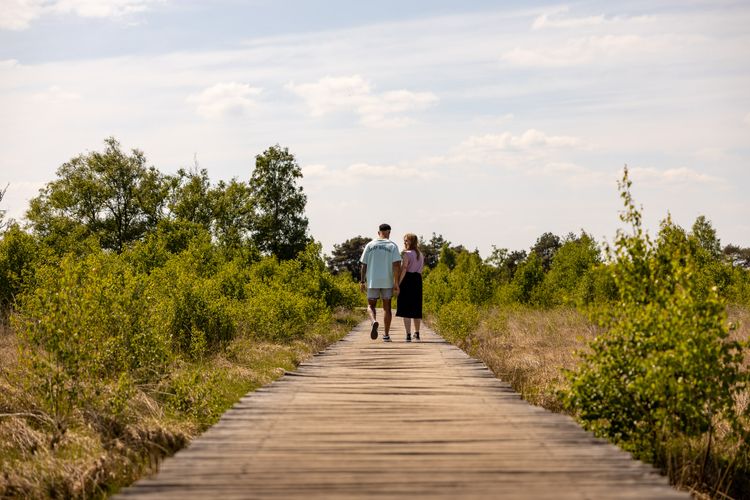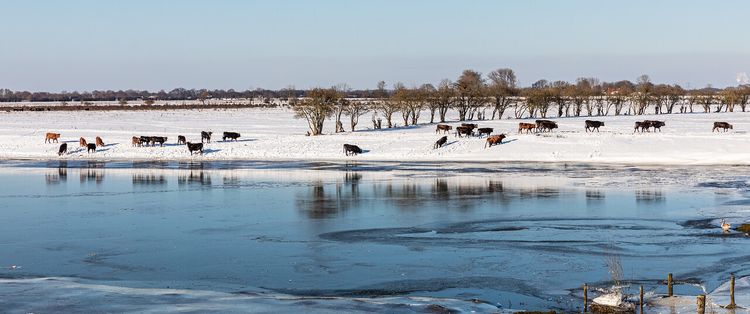Our Monastery Trail: circular tour Aarle-Rixtel
This 13-kilometre circular walk lets you discover the beautiful countryside around the Missionary Convent Holy Blood (Missieklooster Heilig Bloed) in Aarle-Rixtel.
Starting point: from your location
Show all 8 photos
This 13-kilometre circular walk lets you discover the beautiful countryside around the Missionary Convent Holy Blood (Missieklooster Heilig Bloed) in Aarle-Rixtel.
Experience monastic life
Monastic life has brought much to Brabant. Get to know the stories of local monastic life while walking. Our Monastery Trail takes you past fifty historic monasteries and abbeys in fifteen stages. There are also beautiful shorter walks around various monasteries and convents. Each circular walk is described on a separate route map.
Finding the way with numbered junctions
This walking route has been set out using the numbered junction network in Brabant. Simply follow the route via the signposted junctions, from one number to the next. There are also signposts between the junctions to help you find your way.
-
Hotline routes
Hotline routesIf there is something wrong on the route, report it here.
Sights on this route
Missionary Convent Heilig Bloed
Among the fields northeast of Aarle-Rixtel lies Missionary Convent Heilig Bloed (holy blood).
Starting point:
Kloosterdreef 75735 SJ Aarle Rixtel
Navigate to starting point
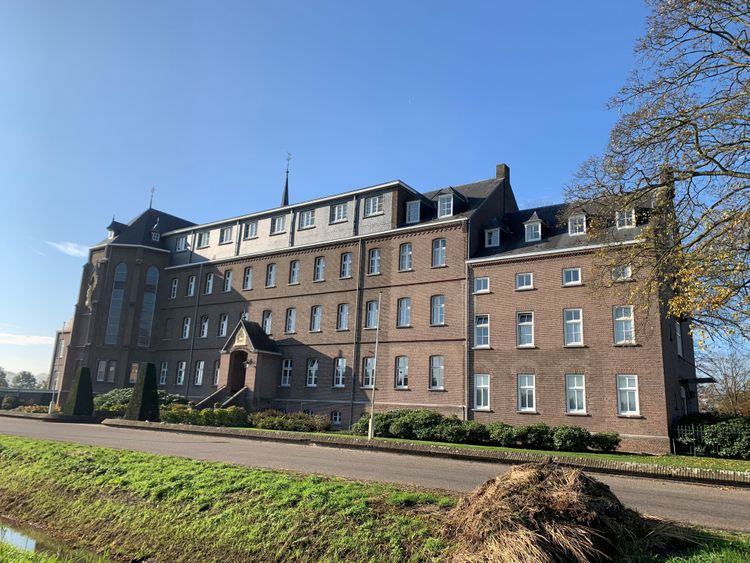
Missionary Convent Heilig Bloed
Missionary Convent Heilig Bloed
Kloosterdreef 7
5735 SJ Aarle Rixtel
Starting point:
Aarle-Rixtel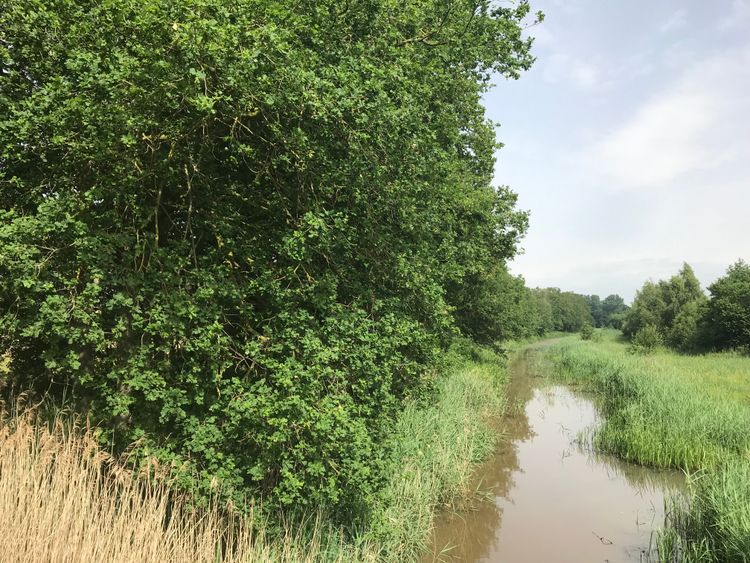
Former Nazareth convent of the Franciscan Sisters of Oirschot
In 1848 the Franciscan Sisters of Oirschot moved into Borret House, the mansion to the right of the convent.
Starting point:
Binderseind 325421 CJ Gemert
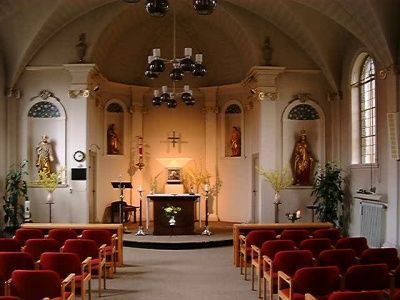
Former Nazareth convent of the Franciscan Sisters of Oirschot
Former Nazareth convent of the Franciscan Sisters of Oirschot
Binderseind 32
5421 CJ Gemert
Gemert Monastery Castle
Nobleman Rutger van Gemert (c. 1150 - c. 1220) was a knight of the Teutonic Order, a military religious order with branches in Germany, Austria, Poland and the Baltic states.
Starting point:
Ridderplein 175421 CW Gemert
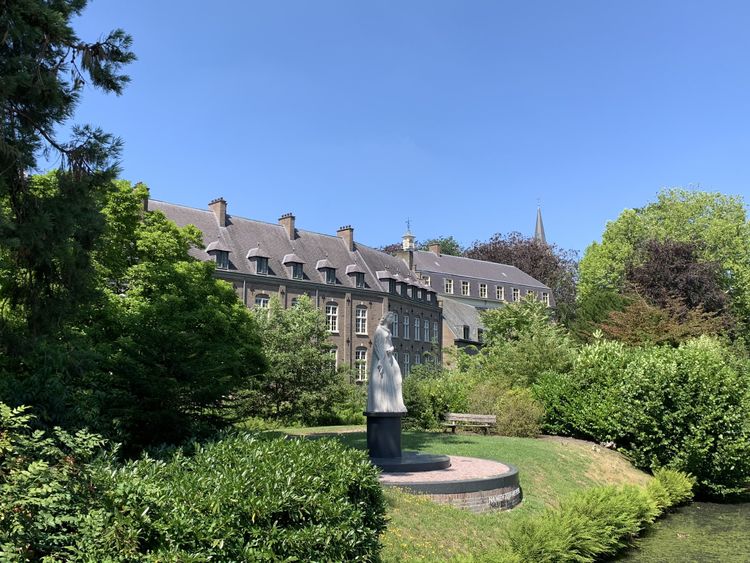
Saint John's Decapitation Church
The church is dedicated to John the Baptist. The name refers to his death, as described in the New Testament.
Starting point:
kerkepad5421 LR Gemert
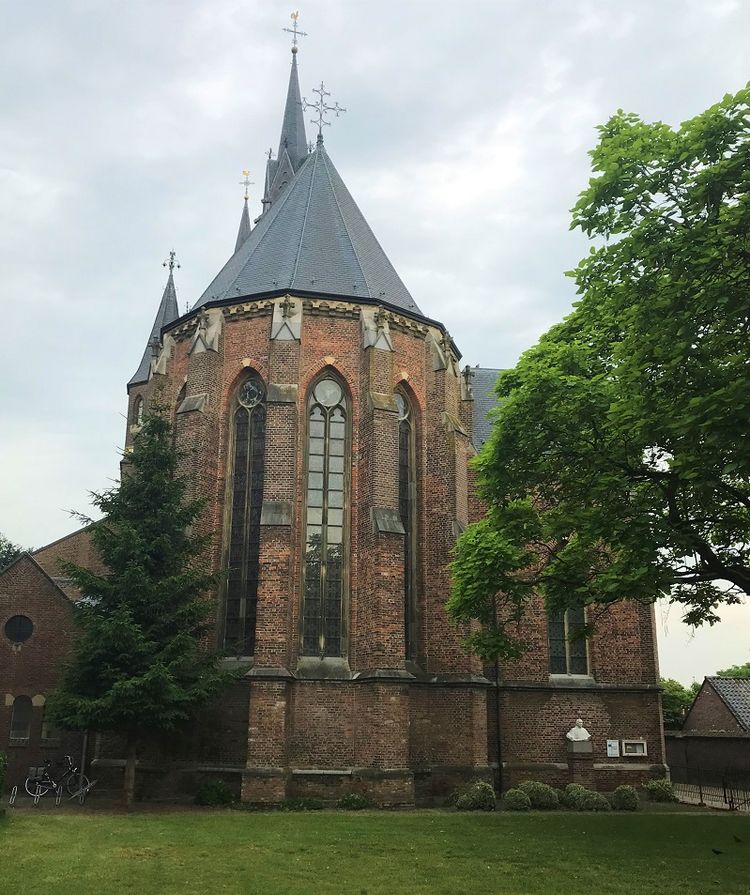
Gerlachus van den Elsen roadside chapel
The Gerlachus van den Elsen roadside chapel is part of the Boerenbond Museum (farmers’ union museum). This Farmers' Museum shows the region’s farm life from around 1900.
Starting point:
Karrenspoor5421 ZA Gemert
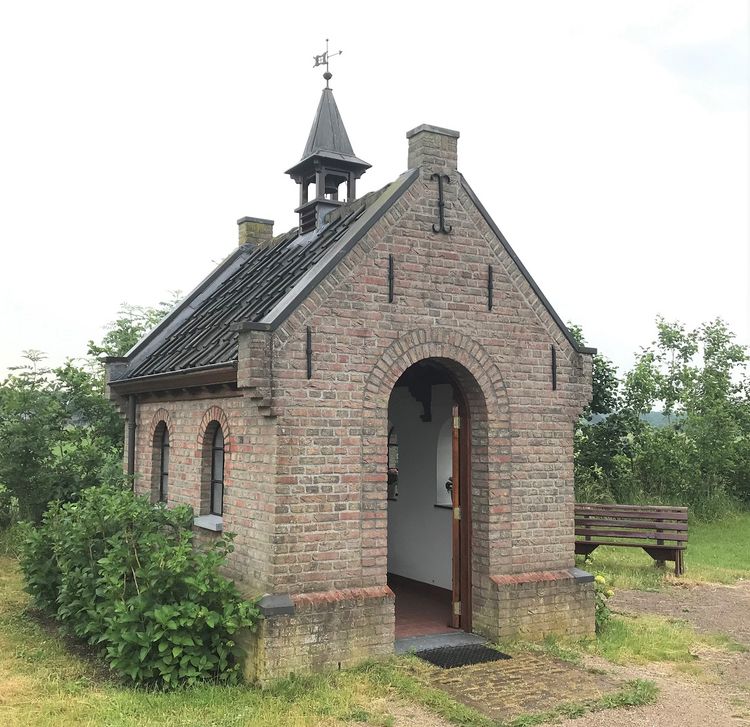
Gerlachus van den Elsen roadside chapel
Gerlachus van den Elsen roadside chapel
Karrenspoor
5421 ZA Gemert
Boerenbondsmuseum Gemert
Voted the best (family) outing in Brabant several times, this living open-air museum in Gemert offers a great experience for both young and old. The authentically decorated farm (with live, very pettable animals) ...
Starting point:
Boerenbondsmuseum GemertPandelaar 106
5421 NJ Gemert

Boerenbondsmuseum Gemert
Boerenbondsmuseum Gemert
Boerenbondsmuseum Gemert
Pandelaar 106
5421 NJ Gemert
St George's Chapel
The Brabant guilds have strong ties with the Catholic faith, and many guilds in the De Peel region have their own chapel for their patron saint.
Starting point:
De Kampen5421 XA Gemert

Missionary Convent Heilig Bloed
Among the fields northeast of Aarle-Rixtel lies Missionary Convent Heilig Bloed (holy blood).
Starting point:
Kloosterdreef 75735 SJ Aarle Rixtel
Navigate to endpoint

Story of the route
Missionary Convent Heilig Bloed
Among the fields northeast of Aarle-Rixtel lies Missionary Convent Heilig Bloed (holy blood).
Starting point:
Kloosterdreef 75735 SJ Aarle Rixtel
Navigate to starting point

- Missionary Convent Heilig Bloed
Among the fields northeast of Aarle-Rixtel lies Missionary Convent Heilig Bloed (holy blood). The Congregation of the Missionary Sisters of the Precious Blood originated in South Africa at the end of the nineteenth century. The sisters’ most important task was to proclaim the Catholic faith around the world. To prepare the sisters for their arduous missionary work, a convent was founded in Kirchherten, Germany. In 1902 it moved to Brabant. The stone placed at the time of construction and bearing the date 1902-1903 is written in German because of that origin. The inhabitants of Aarle-Rixtel got to know the sisters especially through their work in the area. They worked as district nurses, cared for the elderly and gave music lessons. - Landweer
A landweer is a defence rim made out of earth with a ditch on both sides. The rim was often densely planted. The landweer marked borders, in this case between the free and imperial city of Gemert and the common land issued by the Duke of Brabant in 1300 to the inhabitants of Aarle, Rixtel, Beek, and Donk. Landweers were also used to protect private land and to keep uninvited guests away. They were also good for keeping cattle in one place. - Former Nazareth convent of the Franciscan Sisters of Oirschot
In 1848 the Franciscan Sisters of Oirschot moved into Borret House, the mansion to the right of the convent. At that time Borret House had already known a long history; in the 15th century it was known as Het Goed Kieboom. But it was too small for the sisters and in 1851 they started constructing a new building, and a school. A few years later they added a new chapel. More extensions followed: in 1880 the refectory was added, the rectorate was added a year later, and in 1908 a new wing was built onto the chapel. The school buildings were enlarged in 1915.
Meanwhile, the village of Gemert needed district nurses. The sisters were asked, but decided against it due to their semi-contemplative way of life.
Another congregation, the Viennese Sisters, were found willing, and after various temporary homes they found accommodation in 1920 in a wing of the Nazareth convent. The sisters stopped working as district nurses in 1936 and left Gemert. The convent was given a new look in the 1960s; the front facade was modernised in 1961 and the rear facade in 1971. A high wall was also built around the convent, even obscuring the front facade. The last Franciscan nuns left the convent in 2000. The convent and its gardens have now been converted into apartments. - Gemert Monastery Castle
Nobleman Rutger van Gemert (c. 1150 - c. 1220) was a knight of the Teutonic Order, a military religious order with branches in Germany, Austria, Poland and the Baltic states. After his death, the nobleman left his possessions to the Order, and so, for almost six centuries, the villages of Gemert and Handel were not part of the Duchy of Brabant, but formed a tiny independent state in the Netherlands. The Gemert Commandery grew into an important and rich commandery. The construction of the castle was started in 1391. From the 16th to the 18th centuries it was an important regional spiritual centre, with a Latin school from the 16th century onwards. In 1794 the free state came to an end. For a long time, the fate of the castle was uncertain. After housing a machine cotton mill, it was purchased by Jesuits in the late 19th century. In 1916 the friars and brothers of the Congregation of the Holy Spirit (Spiritans) moved into the castle. They too have left the castle by now. Gemert Castle’s main building was built in 1740 on the remains of medieval cellars. The former donjon from 1548, located in front of the main building, is the oldest part of the castle. You enter the grounds through a gatehouse from around 1600. Surrounding the castle are the castle gardens and lands. - Saint John's Decapitation Church
The oldest parts of this church were built by the Teutonic Order. The nave was built in 1437. The chancel and the sacristy are from the 2nd half of the 15th century. This chancel is easily visible from the village centre, as the church is oriented to the east, meaning the back of the church faces the centre. In 1853 the church was rebuilt by Hendrik Jacobus van Tulder. It was extended and given a new facade and tower. The church has a remarkable name: Saint John's Decapitation Church (Sint Jans Onthoofdingkerk). The church is dedicated to John the Baptist. The name refers to his death, as described in the New Testament. In short, it went like this:
Salome performed a dance for Herod that was so pleasing that she was granted a wish. After consulting with her mother, she asked for the head of John the Baptist on a platter. So it happened that very night. This sinister image of Salome holding a platter with the head of John the Baptist was a favourite subject of many artists and has been depicted many times over the centuries. - Gerlachus van den Elsen roadside chapel and farmers' museum
The Gerlachus van den Elsen roadside chapel is part of the Boerenbond Museum (farmers’ union museum). This Farmers' Museum shows the region’s farm life from around 1900. The museum grew around the house where friar Gerlachus van den Elsen was born. In addition to the various farms there are also several village buildings such as a smithy, a pub, a sweet shop and a weaver's house. There is an orchard and fields yielding crops that have fallen into disuse today.
Gerlachus van den Elsen (Gemert, 1853-1925) was a prior in the Norbertine Abbey of Berne. He was known as the Farmer's Apostle. He devoted himself particularly to the interests of farmers in need, and got them to work together in cooperatives. This resulted in opportunities and development not available to individual farmers. By buying and selling together, so that better prices could be negotiated, and by introducing new technology jointly, so that the risks were spread. The North Brabant Christian Farmers' Union (NCB), now ZLTO, owes its existence to people like Van den Elsen. He was also the founder of the Boerenleenbank, which later became part of the Rabobank. - St George's Chapel
The Brabant guilds have strong ties with the Catholic faith, and many guilds in the De Peel region have their own chapel for their patron saint. There are two guilds in Gemert, one of which did not have a chapel. From 1975, plans were made by the 'De Rooi Skut' guild for their own chapel, and in 2014 St. George's Chapel was consecrated.
Missionary Convent Heilig Bloed
Among the fields northeast of Aarle-Rixtel lies Missionary Convent Heilig Bloed (holy blood).
Starting point:
Kloosterdreef 75735 SJ Aarle Rixtel
Navigate to endpoint

- 18
- 02
- 79
- 78
- 89
- 86
- 82
- 83
- 54
- 52
- 51
- 81
- 80
- 77
- 76
- 78
- 79
- 17
- 18
